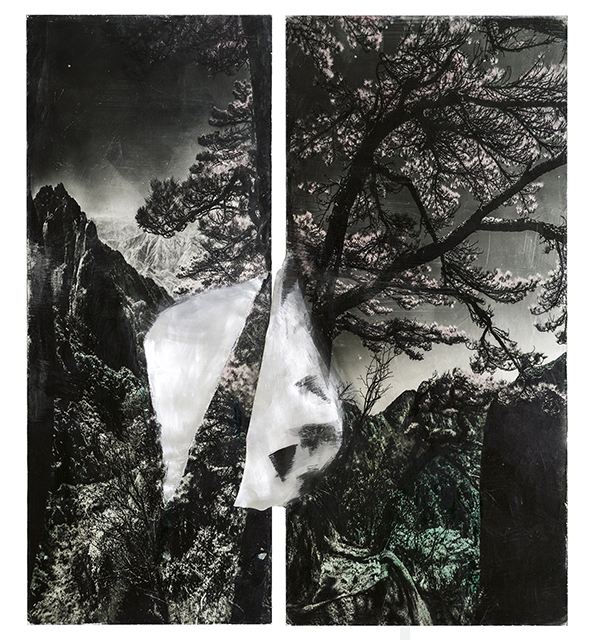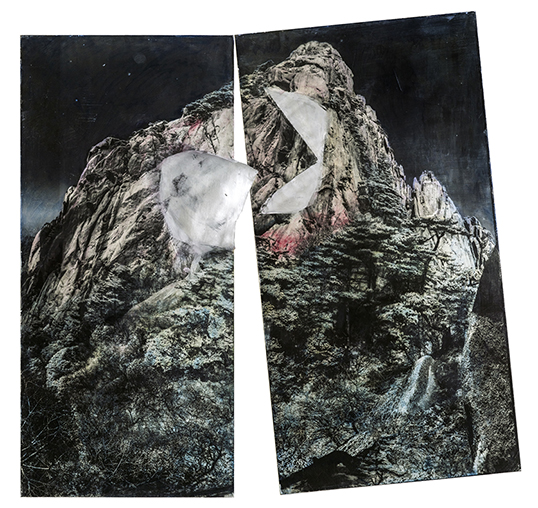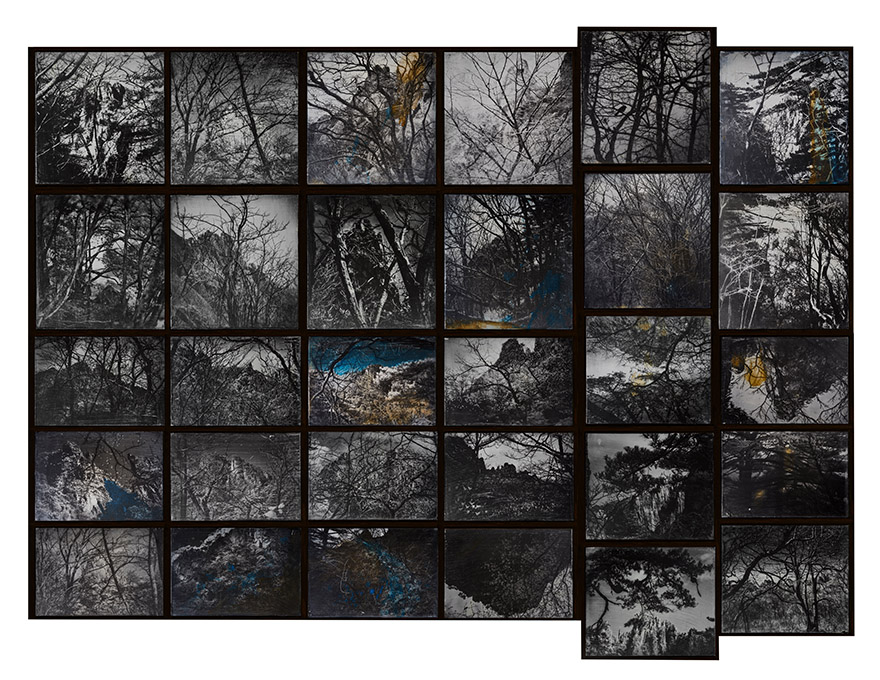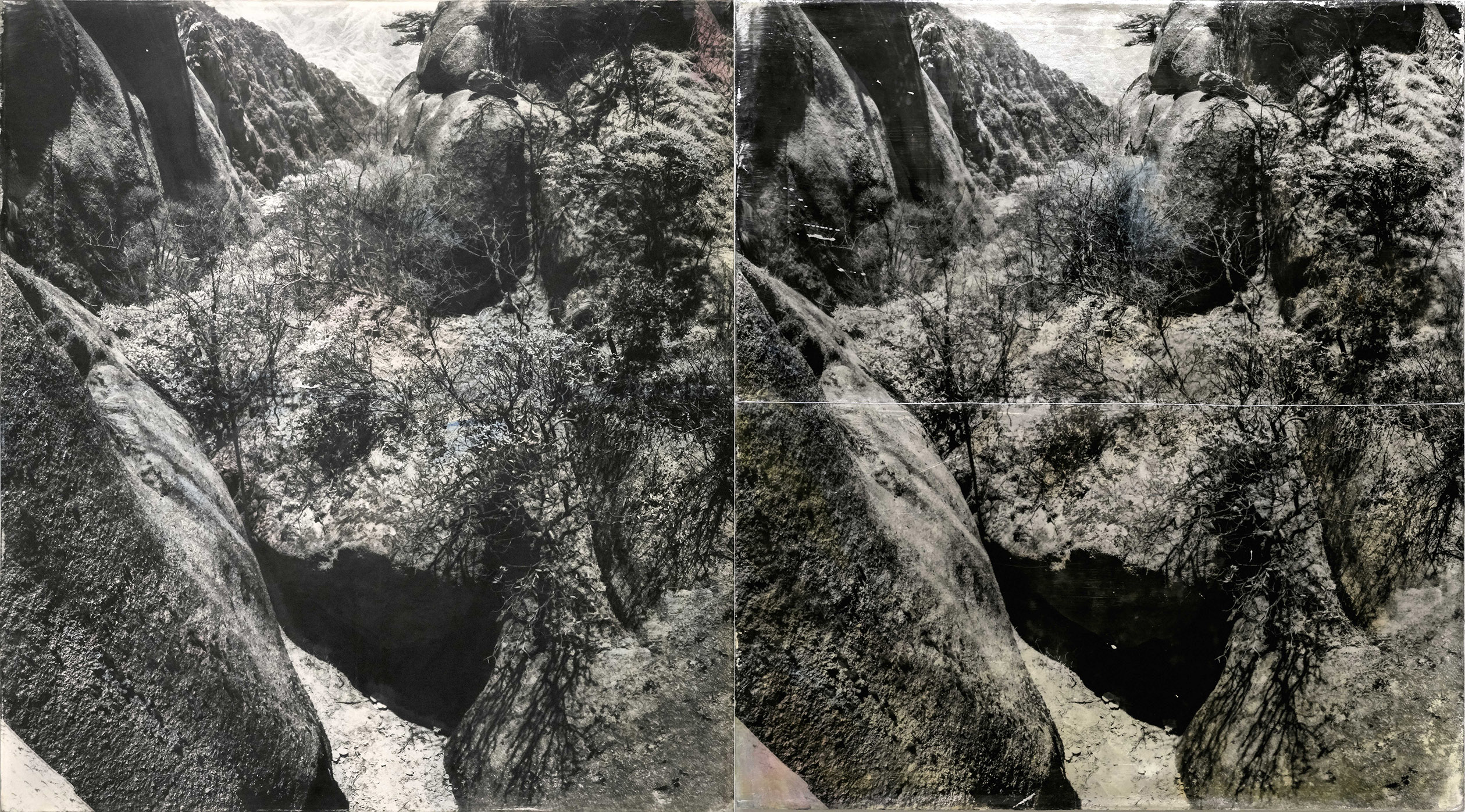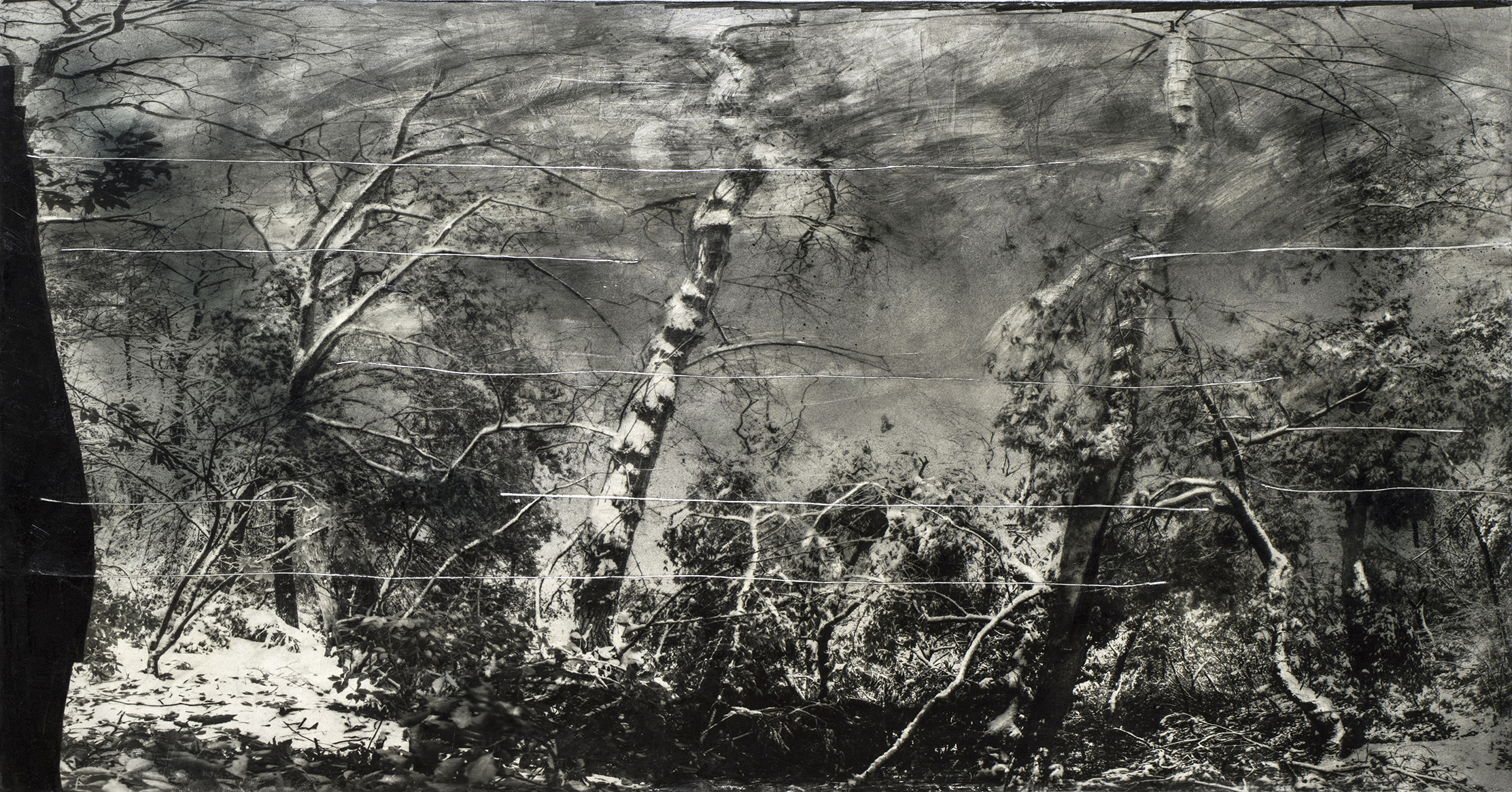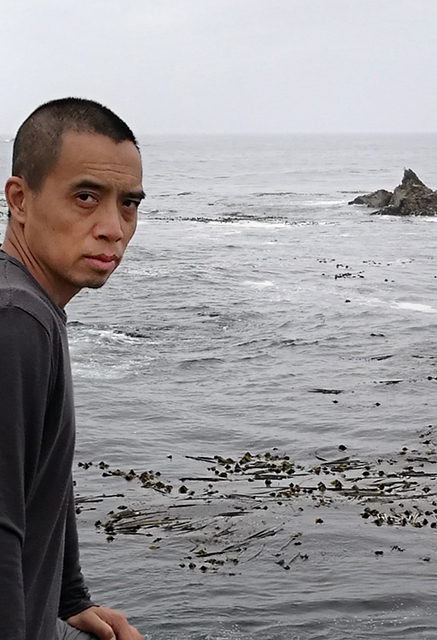邵文欢
遐迩之现
邵文欢的作品“溢出”了艺术史编写的诸多线索之外。其创作从方式、题材、内容等做到了几个不同方向交错纵横,利用着绘画性和摄影性的内涵向外寻找到达图像感受力前端的“触发”(trigger)。
无论从绘画的感知方法还是摄影的视觉逻辑,进入邵文欢的作品并不是那么困难,在本次北京三影堂+3画廊展出的作品中,摄影的视觉媒介将成为他构建自我视觉观的主要方式,绘画则是一种刺破的手段,打通我们被模版化的经验。在这里看到的系列作![]() 品中,我们发现邵文欢的作品通常不会牺牲作为摄影的图像充当一种媒材,不然会使得他背离摄影的理解,即摄影是可塑的错造(miscreated)世界。在“正确”经验的世界之外,那些因为选择“正确”(correct)而丢弃的内容伴随着光影,带着被遮盖的感知、思想、情绪、叙事一同被保留在摄影的图像里。作为错造的世界,不仅仅是指那些错觉的奇观。更加强调的是被忽略的存在。山水自然、星空月影、湖石树林等,以被“异化”的概念存在于其中。我们的眼睛不再通过被动的滤镜来看待这些图像,筛掉那些理所当然的视觉感受模式,才能更加准确的感受一个反向的世界。
品中,我们发现邵文欢的作品通常不会牺牲作为摄影的图像充当一种媒材,不然会使得他背离摄影的理解,即摄影是可塑的错造(miscreated)世界。在“正确”经验的世界之外,那些因为选择“正确”(correct)而丢弃的内容伴随着光影,带着被遮盖的感知、思想、情绪、叙事一同被保留在摄影的图像里。作为错造的世界,不仅仅是指那些错觉的奇观。更加强调的是被忽略的存在。山水自然、星空月影、湖石树林等,以被“异化”的概念存在于其中。我们的眼睛不再通过被动的滤镜来看待这些图像,筛掉那些理所当然的视觉感受模式,才能更加准确的感受一个反向的世界。
就像邵文欢在绘画和摄影创作方式中来回一样,我们常常读到他们的文章,通常以“真实和非真实”、“确定与不确定”、“有和无”、“虚幻和存在”等二元方式介入对他作品的内涵描述。本次展览中大量以黄山、富春山间暇游所创作的山林渐影,以及多年来对星空辽恒图像形成了某种对话关系。山林中从杂反复乱生无序的万象,以树寓人,以山林设江湖,无序中潜藏着有序的人之境界。在浩瀚之星空下,我们相信宇宙洪荒间命中有序,但冥冥之中却找不到有序的根源,假象的有序是我们自身对自然命理无序的恐慌。无论图像背后的艺术家将目光投向哪一边,以时间质感作为载体的邵文欢,建构起的是一种摆动着的世界观,来回之间看清楚自我存在的位置,对于艺术家来说,创作本身就是一种思考方法。邵文欢把自己作为一个介入者的身份来讨论这种秩序的关系,讨论时间的同时他也强调空间可感的介入。在最新创作的《鸾鸟之翼》等作品里,金属铝在图像画面中的多维度的撕扯,其实就是艺术家希望打破摄影生产图像中那单一的主客世界观。摄影在这里从图像意识的主观性走向了空间表现的主体化。
摄影者常以走动远近来观看镜头前的世界,从中选者自己构建的世界。远近来回的行动成为了一种认知两个世界的方式。在山林间远近;在社会中远近;在洪荒中远近,皆如是某种自我的秩序,从而找到自我存在的价值,邵文欢的这次展览便是遐迩间的思考。
Perspectives in the Distance
Combinations of photography and painting, Shao's works are dark and kaleidoscopic puzzles of nature that surge with allusions to art history and the subjectivity of space.
It is easy to get absorbed into the worlds of Shao’s images. Photography is very much at the center, but he manages to conjure destabilized realities and alternate existences all the same. Stars, lakes, stones, the moon – these become hallucinatory landscapes of alienation, the universe turned inside-out. He turns away from the idea of a “correct” or definitive experience and blurs binaries: truth and fiction, existence and emptiness, certainty and the unknown.
In “Perspectives in the Distance”, a large number of pieces meditate on forests and mountains encountered in Shao’s travels to the Yellow Mountains and Mount Fuchun (close to Hangzhou and famously depicted by the 14th century painter Huang Gongwang). Together, they constitute a metaphor with the trees as humans, the forests and mountains as society, and their disorder as a parallel to our own. Under the vast starry sky, we may believe we exist in an orderly universe, but its origin is fated to remain unknown.
While intervening in this debate about a true order, Shao also stresses the role of a sense of space in any such dispute. In works like Wings of a Phoenix Bird, the multidimensional rips of aluminum showcase Shao’s break from a single, black-and-white, subjective or objective worldview in his photography. It is not necessarily a rethinking of image consciousness (that is, the way the image acts as a mirror) he strives for, but this rethinking of space.
Photographers often see the world with the camera by moving far and near, by which they share their own sense of seeing. They perceive the distance in forests, society and the universe as a kind of self-organizing order, so as to find the value of their own existence. This exhibition by Shao Wenhuan is about his gaze from afar, and the uncertain dream that stares back at him.

